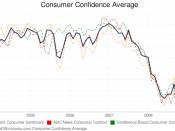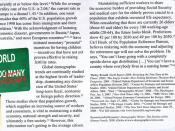The U. S. economy generally performed well for the first half of 2007 as measured by key economic indicators, such as: the gross domestic product, unemployment, consumer confidence and spending, retail sales, inflation, and personal income. The Gross Domestic Product has expanded about the same average rate as the second half of 2006; however the pace has been uneven. The housing activity declined further in the second quarter of 2007 in response to the continued softness in home sales and still elevated inventories of unsold new homes (Federal Reserve). Businesses added jobs at a rate of 2-1/4%, with unemployment remaining at 4-1/2 percent. Consumer confidence rebounded in August 2007 as gasoline prices receded, resulting in an increase in consumer spending. Retail sales have seen a slight reduction mainly due to the decline in home sales. The inflation rate has picked up mainly due to energy and food prices, but continues to be relatively low.
Lastly, the personal income economic indicator reports that the U.S. Personal Income has increased by 0.4%.
Many economists believe that the United States economic activity appears poised to expand at a moderate rate in the second half of 2007, and should strengthen gradually in 2008. However, the housing industry will continue to challenge many consumers and the economy in general. The purpose of this paper is to provide final recommendations and strategic initiatives and illustrate an in-depth analysis of each of the key economic indicators and how the forecasts will impact the housing industry.
Consumer Confidence and SpendingThe consumer confidence index is determined by the level of confidence consumers have based on pre-determined economic questions. The Consumer's Confidence Index is computed each month, based on a surveying 5,000 households. The Rasmussen Consumer Index is derived from nightly telephone surveys of 500 adults and reported on a...


